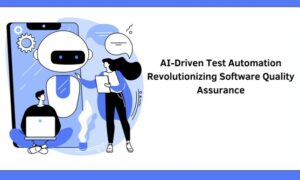The rapid proliferation of artificial intelligence (AI) technologies is ushering in a new era of computational demand, but it’s also exposing critical vulnerabilities in the U.S. energy infrastructure. Data centers, the backbone of AI operations, are consuming electricity at an unprecedented rate, with projections indicating they could account for up to 12% of national power usage by 2030. This surge is not just a technical challenge; it’s igniting heated debates over cost allocation, grid reliability, and sustainable energy sourcing. As hyperscale facilities multiply to support AI workloads, utilities are grappling with strained grids, skyrocketing interconnection queues, and the question of who bears the financial burden—tech giants or everyday consumers. In this article, we delve into the technical intricacies of this power crunch, examining consumption patterns, grid impacts, and emerging solutions for a technical audience navigating this evolving landscape.
The Scale of AI’s Energy Demand
AI models, particularly large language models and generative systems, require immense computational resources. Training a single state-of-the-art model can consume terawatt-hours (TWh) of electricity, equivalent to the annual usage of thousands of households. Globally, data centers are expected to more than double their electricity demand to around 945 TWh by 2030, driven largely by AI-optimized facilities. In the U.S., this translates to a potential tripling of data center power needs, from current levels of about 2% to as high as 20% of total electricity consumption.
The energy intensity stems from high-density GPU clusters. For instance, a typical AI data center might house thousands of Nvidia H100 GPUs, each drawing up to 700 watts, leading to rack power densities exceeding 100 kW—far beyond traditional IT loads of 5-10 kW per rack. Cooling systems, essential to prevent thermal throttling, add another 30-40% to the total energy bill, often relying on water-intensive evaporative methods that exacerbate resource strains in arid regions.
Key drivers of this demand include:
- Hyperscale Expansion: Companies like Microsoft and Meta are investing billions in new campuses, with capex for data centers projected to reach $7 trillion by 2030. Each gigawatt-scale facility can rival the power draw of a mid-sized city.
- AI Workload Growth: Inference tasks alone could drive a 40.5% compound annual growth rate (CAGR) in data center capacity through 2027, as edge AI and real-time processing become ubiquitous.
- Grid Inefficiencies: Transmission losses and outdated infrastructure amplify the effective demand, with some estimates showing AI contributing to a 165% increase in power needs by 2030.
This exponential growth is outpacing grid upgrades, leading to bottlenecks in power delivery and interconnection delays that can stretch 2-5 years.
Strains on Major U.S. Grids
America’s power grids, fragmented across regional transmission organizations (RTOs), are ill-equipped for this sudden surge. PJM Interconnection, serving 13 states and the largest U.S. grid, has seen auction prices for generating capacity rise 22% due to AI-driven demand, with electricity bills projected to surge over 20% this summer. In PJM territory, data centers now account for $9 billion—or 174%—of increased power costs between 2024 and 2025.
Other grids face similar pressures:
- ERCOT (Texas): With abundant renewables but intermittent supply, ERCOT is adding 10,000 MW by 2030, yet water usage for cooling in hyperscale facilities remains a flashpoint, consuming millions of gallons daily.
- CAISO (California): Reliant on 40% renewables, the grid is investing $10 billion in transmission to close a 3,000 MW gap, but drought-prone areas struggle with water-efficient cooling mandates.
- MISO (Midwest): Nuclear and wind sources provide stability, but cold winters reduce cooling efficiency, and grid queues for new connections exceed 120 weeks.
These strains manifest in higher peak loads, increased blackout risks, and deferred retirements of fossil fuel plants, potentially undermining net-zero goals. On X, discussions highlight how AI could consume more electricity than manufacturing by 2030, with users warning of grid failures if infrastructure lags.
The Cost Debate: Who Pays?
At the heart of the power crunch is a contentious debate over cost allocation. Tech companies argue for subsidized connections to accelerate AI innovation, while utilities and regulators push for hyperscalers to fund grid upgrades. In PJM, electricity prices have spiked 800% in some auctions due to data center demand, socializing costs onto residential users. Lawmakers in states like Arizona and Virginia fear rate hikes of 20-30%, prompting bills to make data centers pay for their proportional infrastructure share.
“As AI continues to transform industries, the hidden costs of powering these innovations are becoming impossible to ignore. Businesses must prioritize energy-efficient architectures now, or risk being sidelined by unsustainable expenses,” says Kevin Gallagher, President of Panurgy.
This debate extends to backroom deals where utilities build new plants for AI, then pass costs to consumers, potentially driving 30% of new utility capex. On X, critics label it corporate subsidization, with families in 13 states facing bill increases to cover cheap power for Big Tech.
Innovative Solutions and Onsite Power
To mitigate strains, operators are turning to onsite generation and advanced efficiencies. By 2030, 38% of data centers may incorporate onsite power, including fuel cells and microgrids, to bypass grid delays. Nuclear revival, with small modular reactors (SMRs), offers baseload stability, while renewables like solar and wind are paired with battery storage for 24/7 reliability.
Emerging strategies include:
- Direct Liquid Cooling (DLC): Reduces energy overhead by 30%, minimizing water use through immersion in dielectric fluids.
- AI-Optimized Grids: Using machine learning for demand forecasting, potentially saving 10-15% in transmission losses.
- Hydrogen and Fuel Cells: Microsoft’s Wyoming project demonstrates zero-emission onsite power, aligning with U.N. calls for 100% renewables.
However, supply chain issues, such as China’s dominance in transformers (80% of U.S. imports), complicate scaling, with lead times ballooning to 210 weeks.
Implications for Businesses and Consumers
For enterprises adopting AI, the power crunch means reevaluating IT strategies. Edge computing and hybrid clouds can distribute loads, but optimizing infrastructure is key. Managed IT Service companies like Panurgy provide IT Consulting in NJ and offer tailored assessments to enhance efficiency, from power usage effectiveness (PUE) audits to renewable integration.
Consumers face indirect hits through higher bills and potential reliability issues, with AI disrupting power flows and causing appliance malfunctions in some areas. Policymakers must balance innovation with equity, perhaps through tariffs or incentives for green builds.
The Path Forward
As AI’s energy hunger grows, collaborative efforts between tech firms, utilities, and regulators are essential. Investments in grid modernization—estimated at $400 billion by 2030—could alleviate strains, but only if costs are fairly distributed. The debate underscores a pivotal moment: harness AI’s potential without compromising the grid’s integrity. By prioritizing sustainable, efficient solutions, the U.S. can navigate this crunch toward a resilient energy future.

































